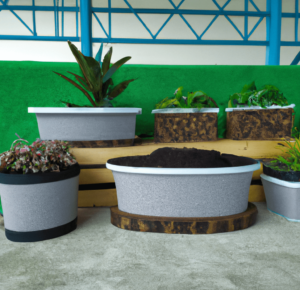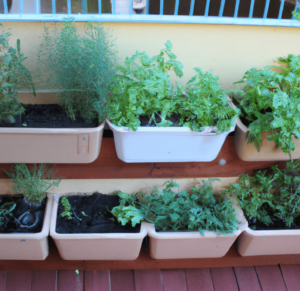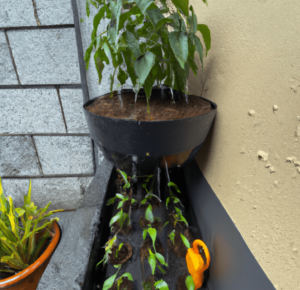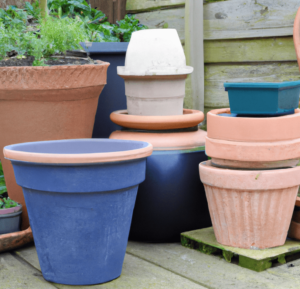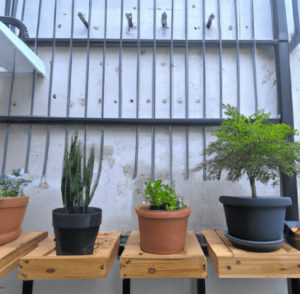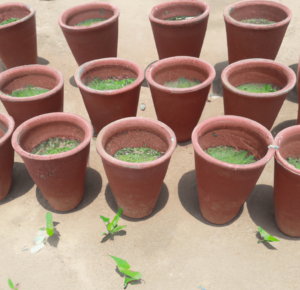The type of planter you use when planting can have a significant impact on the development and well-being of your plants. Choosing the best planter for your needs might be overwhelming because there are so many options available, each with special features and advantages. We’ll teach you all about the different types of planters and their uses in this article!
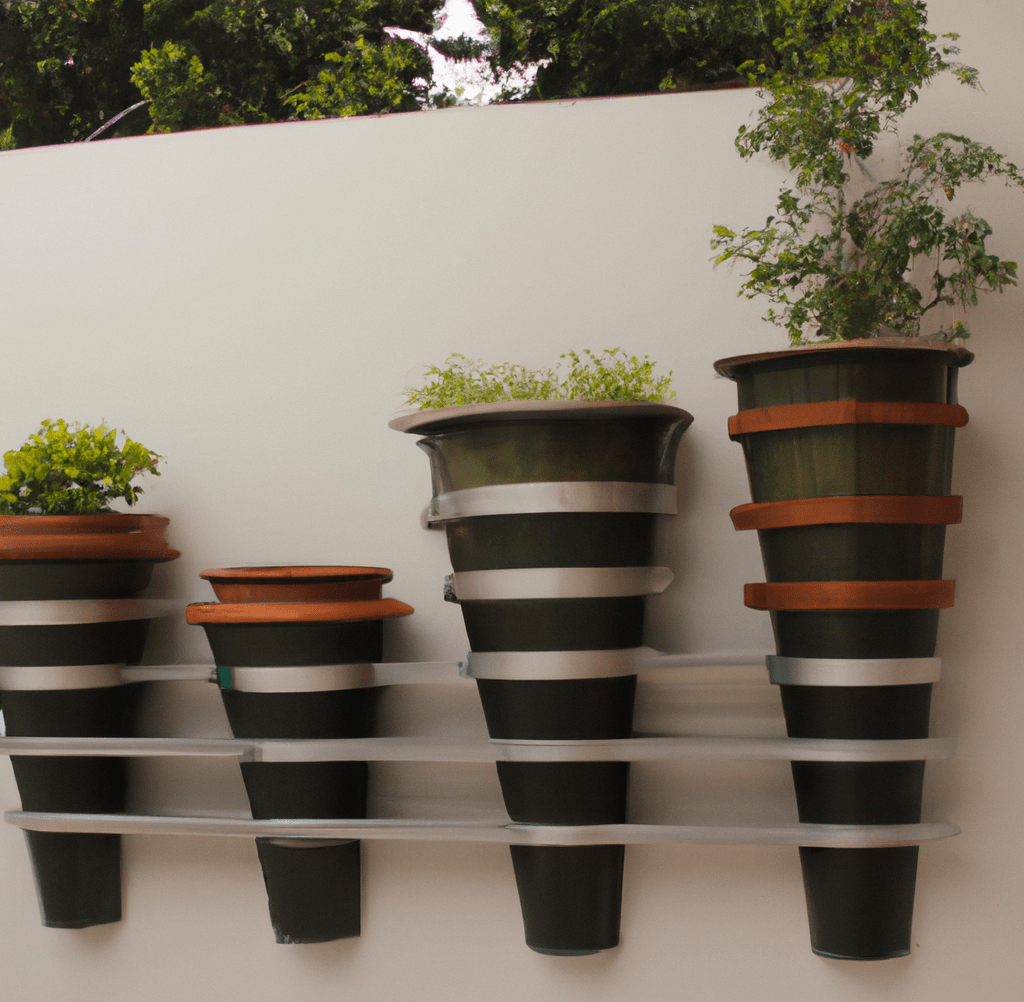
Types of Planters
When learning about the different types of planters and their uses, you have to be able to tell them apart. Here are the type of planters:
- Hanging Planters: Hanging planters are ideal for bringing greenery into confined areas like patios or balconies. They are offered in a variety of sizes, shapes, and materials, including plastic, metal, and woven baskets.
- Wall-Mounted Planters: Wall-mounted planters are perfect for growing plants in compact areas, such as balconies or tiny flats. They may be used to construct a vertical garden in any location and come in a variety of forms, including metal, wooden, and plastic.
- Window Box Planters: Window box planters are a traditional option for decorating window sills and balconies with color and flair. They are available in a variety of sizes, styles, and materials, such as wood, metal, and plastic.
- Raised beds: Planters with raised beds are ideal for producing herbs, vegetables, and other plants in constrained areas. They come in a number of shapes and styles and are offered in a range of sizes and materials, such as wood, plastic, and metal.
- Self-watering planters: If you want to make sure your plants get constant water, self-watering pots are an excellent alternative. They have a wicking system that delivers water to the plant roots as needed and a water reservoir in the planter’s bottom.
- Vertical Garden Planters: Growing a variety of plants in a small area is easy with the help of vertical garden planters. They come in a number of shapes and styles and are available in a range of materials, such as plastic, metal, and wood.
Think about the types of plants you’re sowing and their needs when you’re looking for the best planter.
Choosing the Right Planter
There are several significant considerations to take into account while selecting the right planter. Important considerations include the kind of wood used, the quantity of water and soil, the size of the pot, and the plants you intend to grow.
You should also consider the planter’s position, the amount of sunshine it will receive, the design of your home, and the effect you want to achieve. It’s critical to pick a planter that will satisfy your unique requirements and be the ideal fit for your plants and your environment.
Factors to Consider When Choosing a Planter
When you’re learning about the different types of planters and their uses, here are some things to keep in mind when choosing between them:
- Type of plant: Select a planter that is appropriate for the kind of plants you intend to grow. While some plants might benefit from larger pots, others might benefit from smaller ones.
- Drainage: Check the planter’s drainage to ensure that water doesn’t pool in the soil and lead to root rot.
- Material: Planters come in a variety of materials, including plastic, wood, terra cotta, and others. Pick a material that will last and complement your style.
- Watering: Take into account how frequently you will be watering your plants, and select a planter that will allow for good drainage and water retention.
- Size: The planter’s dimensions should match the size of the plant and the size of its root system.
How to Select the Right Size and Shape of Planter
The size and shape of the container should be taken into account when choosing between the different types of planters and their uses. The planter should be the proper size for the plant, allowing space for soil and root development. The entire appearance and design of your garden or indoor space might be impacted by the shape of the planter.
Fiberglass is one material to take into account while choosing planters. Fiberglass planters are a great alternative for any location because they are lightweight and are available in a wide range of shapes, sizes, and colors. They are a fantastic option for outdoor use because of their strength and weather resistance.
The color of the planter should also be considered in addition to its size and shape. Planters are available in a variety of hues and can be utilized to either accentuate or contrast the décor around them. For a unified design, choose a planter color that coordinates with your walls, furniture, or other furnishings. Alternatively, choose a contrasting hue for an added flash of interest.
Tips for Choosing the Best Material for a Planter
Because different materials have varied features that can affect the health and growth of your plants, it’s crucial to take this into account when choosing from the different types of planters and their uses:
- Environment: When choosing a material for your planters, keep the environment in mind. If you intend to use them outside, pick something sturdy and resistant to the elements, like fiberglass or plastic. While not as weather-resistant, materials like wood or ceramic can still offer a beautiful element to your room if you plan to utilize your planters indoors.
- Weight: If you intend to move your planters regularly, take into account their weight and go with a material like plastic or fiberglass that is lighter. In contrast, if you want your planters to remain in one location, you can pick a stronger material like wood or stone that won’t topple over as quickly.
- Think about the color: Your yard or indoor space’s appearance can be significantly influenced by the color of your planters. To add a pop of visual interest, choose a color that contrasts with the hue of your walls, furniture, or other items.
- Consider the price: Depending on the material, planters can range widely in price. Planters made of plastic and fiberglass are frequently less expensive than those made of wood or ceramic. When deciding on the appropriate material for your planters, take your budget into account.
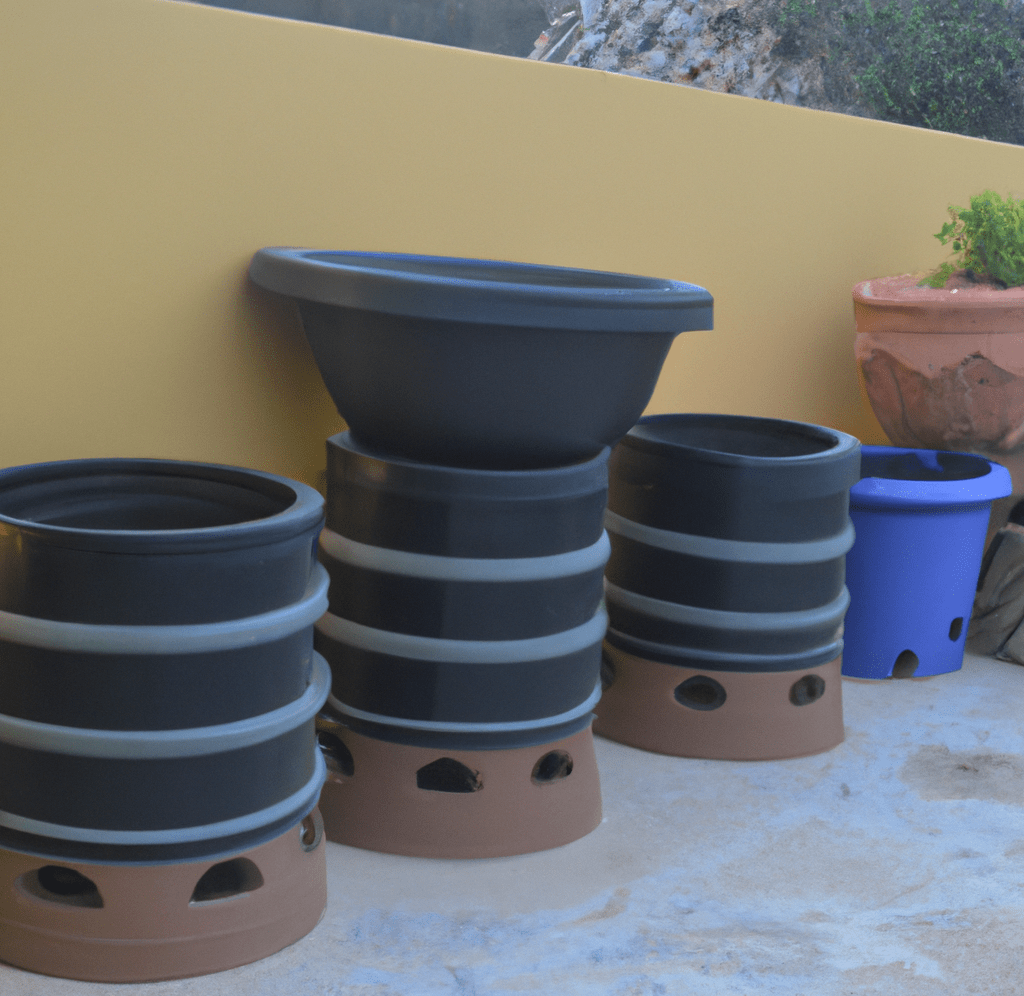
Uses of Different Planters
Different materials are used to make planters, and each one has special qualities and applications. Wooden planters are a common choice for both indoor and outdoor use because of their natural appearance and warmth. Plastic planters are a great solution for all kinds of plants because they are lightweight, strong, and have a wide range of colors. Due to their resistance to rot and decay, they are especially excellent for use in locations with poor drainage.
Because of their ornamental qualities and durability, planters made of materials like fiberglass or ceramic are also useful for both indoor and outdoor use. No matter the material, it’s crucial to pick a planter with good drainage to guarantee the well-being and development of your plants. Let’s look at the different types of planters and their uses here!
Indoor vs Outdoor Planters
Whether they will be utilized inside or outside should be taken into account while choosing between the different types of planters and their uses. Metal, plastic, and porous materials like ceramic and terra cotta are just a few of the materials that may be used to make planters for both indoor and outdoor use. You should be aware that there are important distinctions between indoor and outdoor planters.
Indoor planters are used frequently for their decorative advantages and are made to be utilized in a controlled setting. They are often made of porous or ceramic materials, which are less resilient than outside planters. Indoor planters don’t need to be as weather- and water-resistant, but it’s still crucial to pick one with good drainage to avoid water damage.
On the other hand, outdoor planters are made to survive the weather. They are frequently built of stronger materials, like metal or plastic, and are intended to withstand weather and moisture. For the health and growth of your plants as well as to prevent water damage, outdoor planters must have adequate drainage.
Small vs Large Planters
The container’s size should be taken into account when choosing from the different types of planters and their uses. The best option for you will depend on your personal needs and tastes as both small and large planters have their own distinct benefits and drawbacks.
Small planters, such as those made of terracotta or plastic, are perfect for tight locations, like windowsills or apartment balconies. Because they don’t take up much space and are simple to move around, they are also excellent for growing small herbs or succulents and you can use these planters in vertical gardening. Small planters are an adaptable option for both indoor and outdoor use because they are more economical, come in a variety of colors, and have different patterns.
On the other hand, giant planters are fantastic for bigger spaces and may be utilized to add height or focal points to your indoor or outdoor garden. Once filled with dirt and plants, they can be heavy and difficult to handle and are frequently built of materials like wood or fiberglass. Large planters, on the other hand, provide more room for your plants to develop and can be used to make a lush, lush garden.
Planters for Specific Types of Plants and Gardening Styles
It’s crucial to take your plants’ individual requirements into account while choosing between the different types of planters and their uses, as well as your chosen gardening method. The appropriate kind of planter can help to ensure the health and growth of your plants by meeting their various needs for soil, water, and sunlight.
For instance, ferns and other plants that need damp soil will thrive in planters constructed of wood or ceramic that have adequate drainage and water retention. Cacti and succulents, which need soil that drains well, will thrive in pots made of materials like plastic or terracotta because they allow for improved airflow and drainage.
The size and design of your planter can also have an impact on the well-being and development of your plants. A plant’s development and root system may be constrained by a planter that is too tiny for it, while a planter that is too large may contain too much water and cause root rot.
Bottom Line: The Different Types of Planters and Their Uses
In this post, we looked at the different types of planters and their uses, as well as their distinctive qualities and applications. There are several options to pick from, including contemporary fiberglass containers and traditional terracotta pots.
It’s crucial to take into account the particular requirements of your plants, including their needs for soil, water, and sunlight while choosing a planter. The water retention and drainage capacities of the planter can be impacted by different materials including plastic, metal, and wood, and the size and form of the container can have an impact on the development and health of the plants.
Your overall gardening taste and style can also be influenced by the color and design of your planter. There is a planter to fit your style, whether you choose a simple, natural appearance or a striking, vibrant statement.
The Different Types of Planters and Their Uses FAQs
What are the many kinds of planters and what are they used for?
Hanging planters, wall-mounted planters, window box planters, raised beds, self-watering planters, and vertical garden planters are just a few of the different kinds of planters that are offered. Each variety is suitable for various planting requirements and settings and has its own unique qualities and advantages.
What should I take into account when selecting a planter?
The sort of plant you wish to grow, the drainage system, the planter material, the frequency of watering, and the size of the planter are all key considerations when choosing a planter.
How do I pick a planter that is the proper size and shape?
For healthy soil and root development, the planter’s size and shape should correspond to the size of the plant and the size of its root system. The shape of the planter may also have an impact on the style and appearance of your indoor or outdoor environment.
What aspects should be taken into account while selecting the appropriate material for a planter?
Consider the environment in which the planter will be used, its weight, and the effect you want to achieve when selecting the material. While wood or ceramic can be utilized indoors, weather-resistant materials like fiberglass or plastic are better suited for outdoor use.
What should I consider when choosing the planter’s color?
The color of the planter should either complement the furnishings already there or act as a striking contrast. For a united design, think about selecting a color that complements your walls, furniture, or other furnishings; alternatively, go with a contrasting shade for an extra spark of interest.


